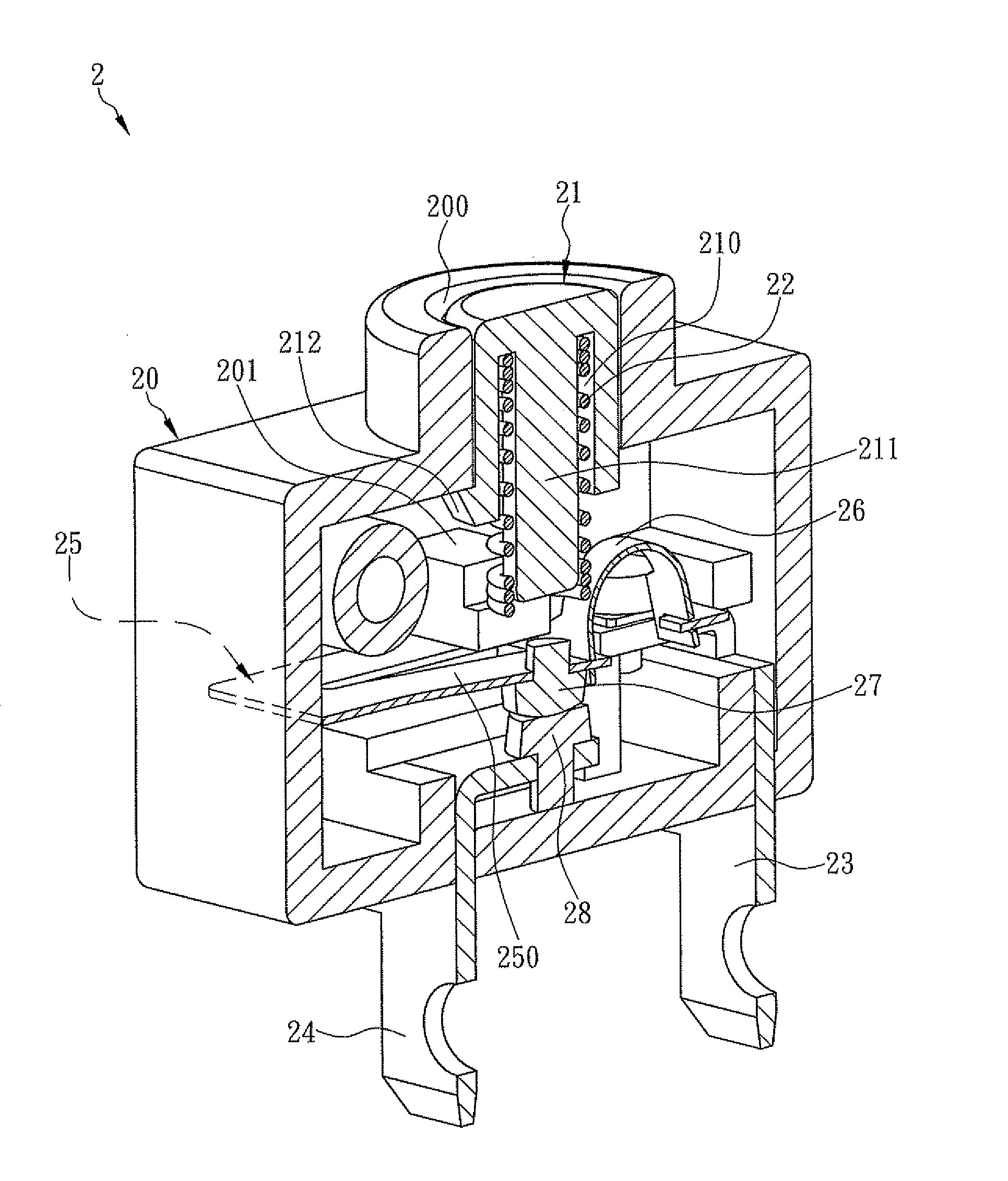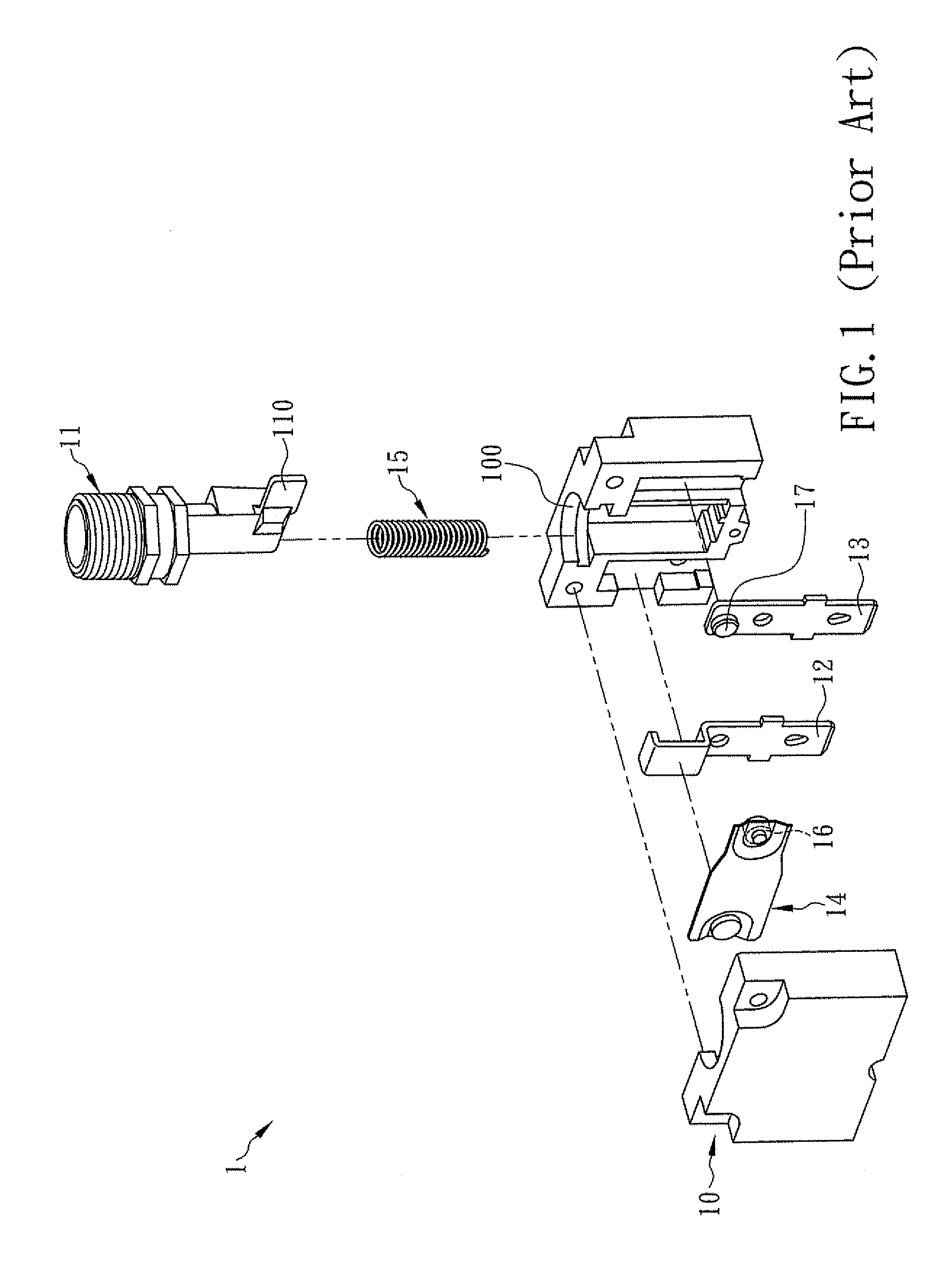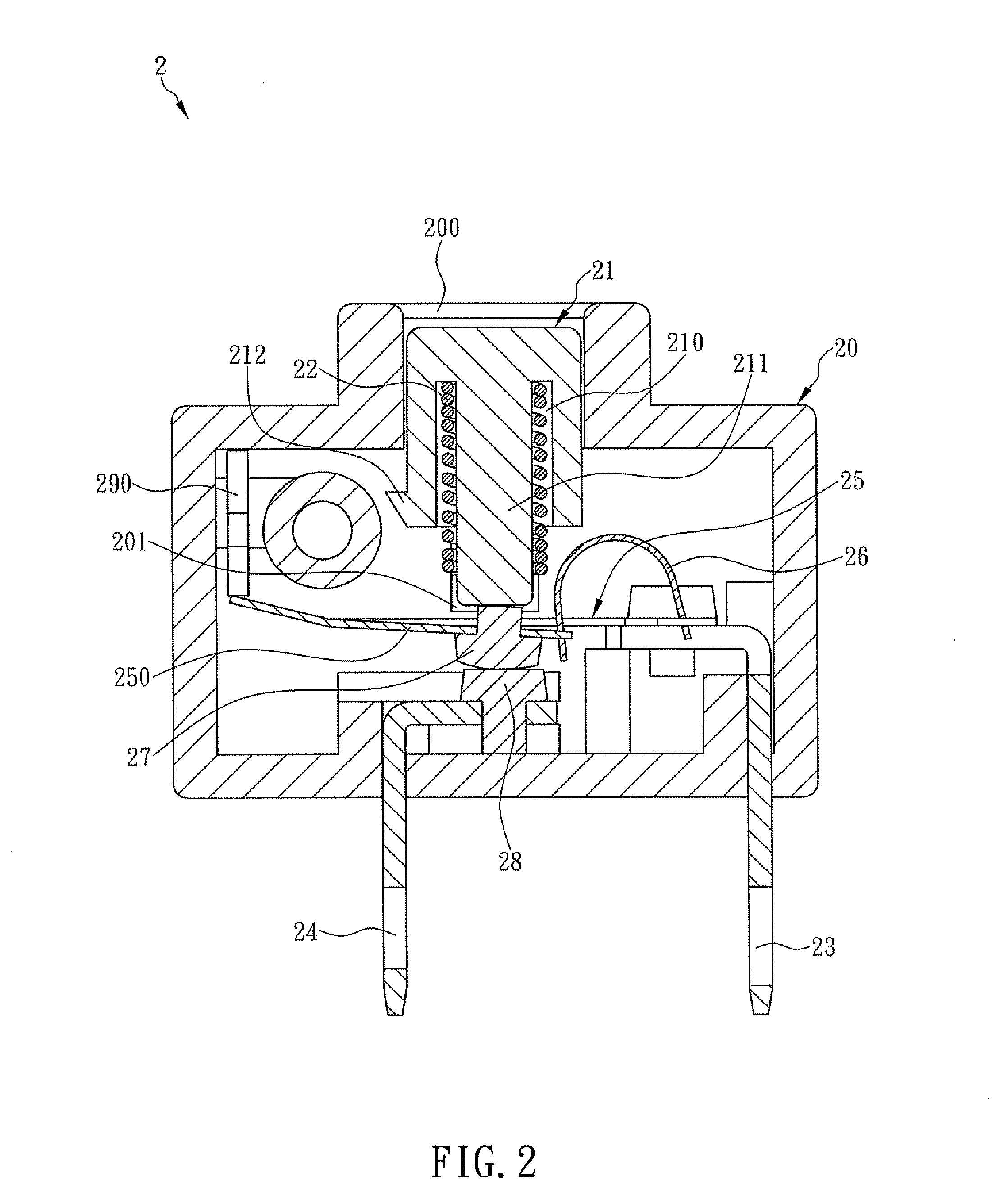Overcurrent protection device having free trip mechanism
a protection device and free trip technology, applied in the direction of protective switch details, contact mechanisms, relays, etc., to achieve the effect of reducing the risk of overcurrent protection devices
- Summary
- Abstract
- Description
- Claims
- Application Information
AI Technical Summary
Benefits of technology
Problems solved by technology
Method used
Image
Examples
Embodiment Construction
[0017]The present invention is an overcurrent protection device having a free trip mechanism. Referring now to FIG. 2, the overcurrent protection device 2 comprises a housing 20, a button 21, an elastic element 22, a first wire terminal 23, a second wire terminal 24, a memory alloy plate 25 and an elastic metal sheet 26, wherein the button 21 fits within an inner periphery of an opening 200 of the housing 20, and the button 21 has a lower surface formed with a receiving space 210 which receives therein an extended rod 211. The extended rod 211 has a first end connected to the lower surface of the button 21, while the length of the extended rod 211 is greater than that of a peripheral wall of the button 21. The elastic element 22 is sleeved on the extended rod 211. The elastic element 22 has a first end abutting against the lower surface of the button 21, and a second end abutting against a stopping block 201 formed on an inner side wall of the housing 20. The first wire terminal 23 ...
PUM
 Login to View More
Login to View More Abstract
Description
Claims
Application Information
 Login to View More
Login to View More - R&D
- Intellectual Property
- Life Sciences
- Materials
- Tech Scout
- Unparalleled Data Quality
- Higher Quality Content
- 60% Fewer Hallucinations
Browse by: Latest US Patents, China's latest patents, Technical Efficacy Thesaurus, Application Domain, Technology Topic, Popular Technical Reports.
© 2025 PatSnap. All rights reserved.Legal|Privacy policy|Modern Slavery Act Transparency Statement|Sitemap|About US| Contact US: help@patsnap.com



